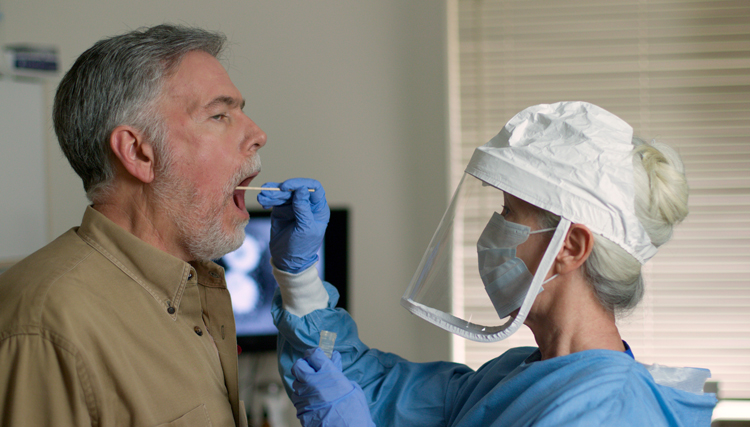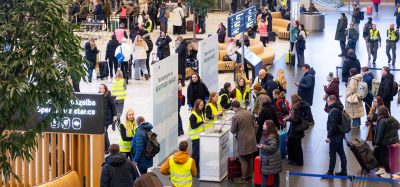Criteria for COVID-19 testing during the travel process published by IATA
- Like
- Digg
- Del
- Tumblr
- VKontakte
- Buffer
- Love This
- Odnoklassniki
- Meneame
- Blogger
- Amazon
- Yahoo Mail
- Gmail
- AOL
- Newsvine
- HackerNews
- Evernote
- MySpace
- Mail.ru
- Viadeo
- Line
- Comments
- Yummly
- SMS
- Viber
- Telegram
- Subscribe
- Skype
- Facebook Messenger
- Kakao
- LiveJournal
- Yammer
- Edgar
- Fintel
- Mix
- Instapaper
- Copy Link
Posted: 16 June 2020 | International Airport Review | No comments yet
Should COVID-19 testing be introduced as part of the travel process, IATA has highlighted that speed, scale and accuracy must be considered.


The International Air Transport Association (IATA) has released criteria for the use of COVID-19 testing in the travel process. Should governments choose to introduce COVID-19 testing for travellers arriving from countries considered as ‘high risk’, IATA has stated that testing must deliver results fast, be able to be conducted at scale and operate to very high rates of accuracy. Additionally, testing must be cost-effective and not create an economic or logistical barrier to travel.
In early June 2020, the International Civil Aviation Organization (ICAO) published ‘Take-Off’ guidance, which has been adopted as the global guidance for governments to follow in reconnecting their people and economies by air. The guidance outlines layers of measures to mitigate the risk of COVID-19 transmission during air travel and the risk of importation of COVID-19 via air travel. IATA has highlighted that COVID-19 testing should not be deemed a necessary condition by governments for re-opening borders or resuming air services.
However, IATA has outlined that technology for rapid point-of-care Polymerised Chain Reaction (PCR) testing could be a useful layer of protection for travellers from countries considered as higher risk, potentially removing the need for more burdensome and intrusive measures – such as quarantine, which is a major barrier to travel and the recovery of demand.
IATA’s Director General and CEO, Alexandre de Juniac, said: “Airlines are committed to reducing the risks of COVID-19 transmission via air travel, and COVID-19 testing could play an important role. But it must be implemented in line with ICAO’s global re-start guidance with the aim of facilitating travel. Speed, scale and accuracy are the most critical performance criteria for testing to be effectively incorporated into the travel process.”
As part of the travel process, IATA has outlined that COVID-19 testing would need to be conducted by trained public health officials and meet the following criteria:
- Speed: Testing results should be delivered quickly, with results available in under an hour as the minimum standard
- Scale: If testing takes place at the airport, testing capacity of several hundreds of tests per hour must be achievable. The use of saliva for taking samples rather than nasal or throat swabs would facilitate this and would also be expected to reduce time and improve passenger acceptance
- Accuracy: Extremely high accuracy is essential. Both false negative and false positive results must be below one per cent.
Testing processes
Ideally, COVID-19 testing would be required in advance of arrival at the airport and within 24 hours of travel. Passengers arriving ‘ready to fly’ reduces the risk of contagion in the airport and enables early re-accommodation for any traveller who tests positive.
If testing is required as part of the travel process, it is recommended at departure. Governments would need to mutually recognise test results and data transmission should take place directly between passengers and governments in a similar manner as e-visa clearances are currently handled.
Any testing requirements should only be in place for as long as necessary. To ensure this, regular evaluations should be conducted.
Cost considerations
Cost is an important consideration, as testing should facilitate travel and not provide an economic barrier. With testing at some European destinations costing in excess of $200, this is a real concern.
IATA supports the World Health Organization‘s (WHO) International Health Regulations, which requires governments to bear the costs of mandatory health testing. Where a test is offered on a voluntary basis, it should be charged at cost price.
Testing positive
Ideally, testing takes place prior to travel or at the point of departure, and a positive result would mean that the passenger could not travel as planned. If testing is mandated on arrival and a passenger tests positive, then the passenger should be treated according to the requirements of the receiving state.
Related topics
Airport crisis management, COVID-19, Passenger experience and seamless travel, Safety, Terminal operations
Related organisations
International Air Transport Association (IATA), International Civil Aviation Organization (ICAO), World Health Organization (WHO)


















